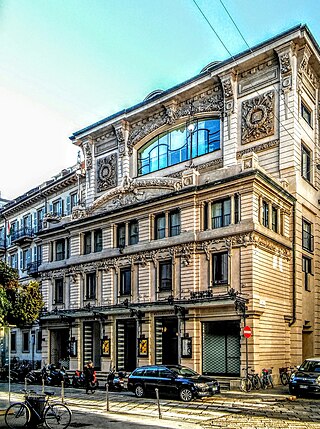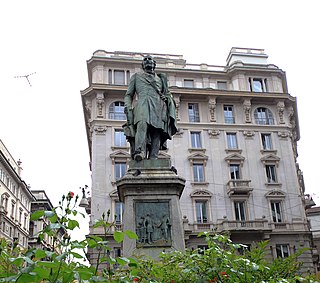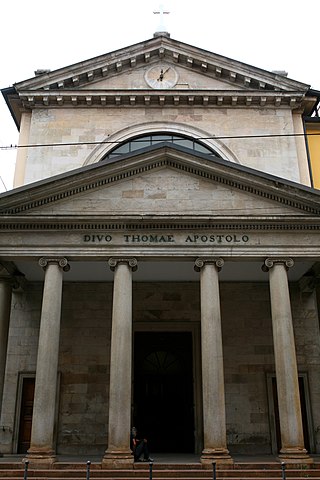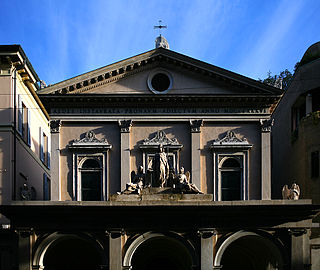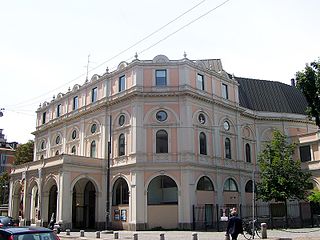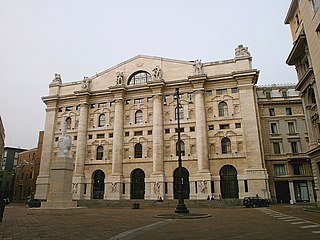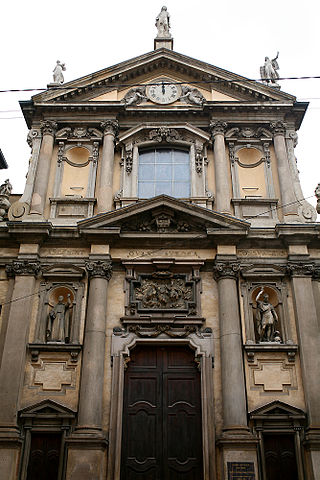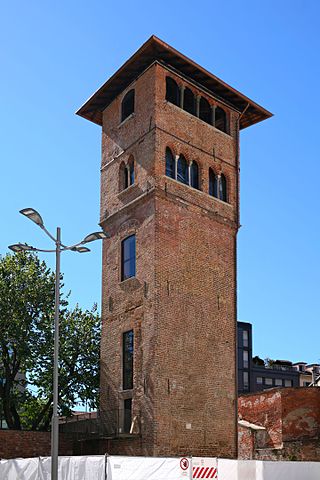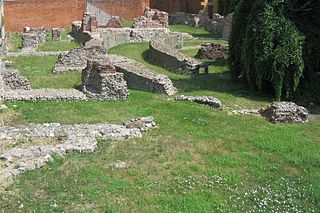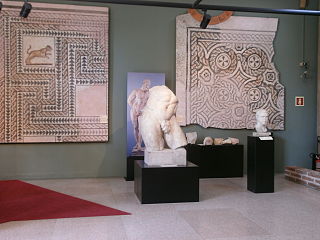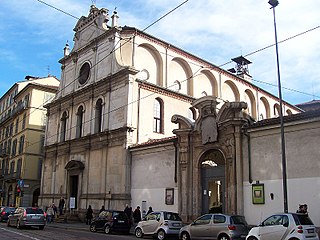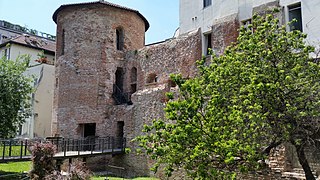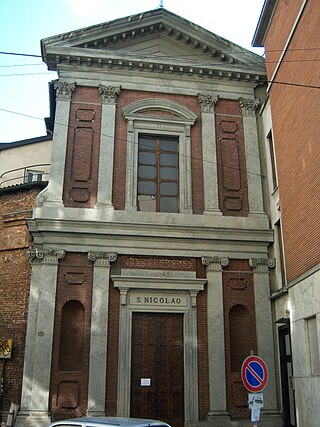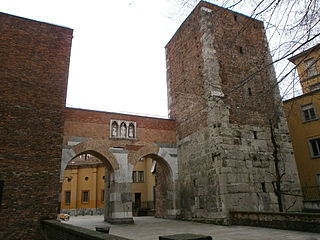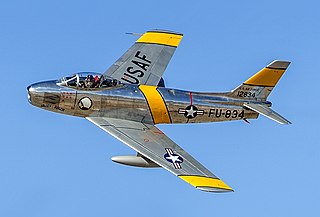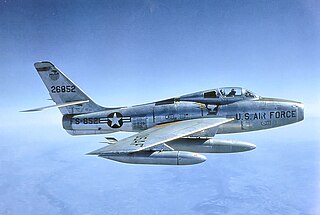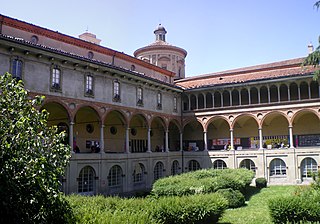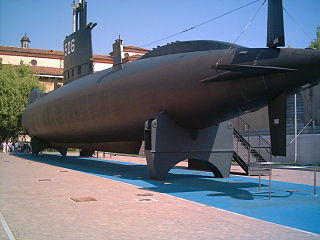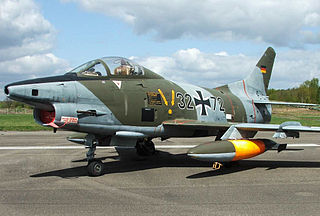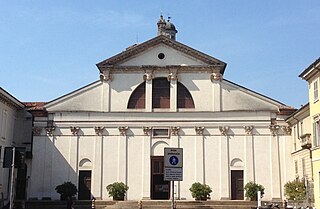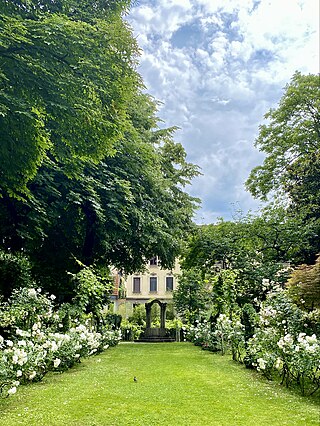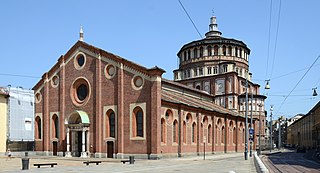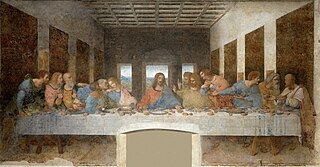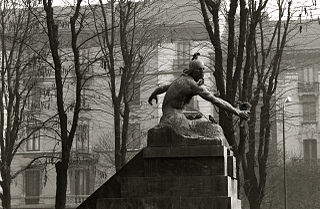Self-guided Sightseeing Tour #2 in Milan, Italy
Legend
Guided Free Walking Tours
Book free guided walking tours in Milan.
Guided Sightseeing Tours
Book guided sightseeing tours and activities in Milan.
Tour Facts
6.9 km
112 m
Experience Milan in Italy in a whole new way with our free self-guided sightseeing tour. This site not only offers you practical information and insider tips, but also a rich variety of activities and sights you shouldn't miss. Whether you love art and culture, want to explore historical sites or simply want to experience the vibrant atmosphere of a lively city - you'll find everything you need for your personal adventure here.
Activities in MilanIndividual Sights in MilanSight 1: Teatro dei Filodrammatici
The Teatro Filodrammatici in Milan was built between 1798 and 1800 by the great architect Luigi Canonica, based on a sketch by Piermarini reworked by Pollak. It was profoundly remodeled several times, especially in 1904 when it was given its current Art Nouveau forms.
Sight 2: Carlo Cattaneo
The monument to Carlo Cattaneo is a sculpture by Ettore Ferrari located in Via Santa Margherita in Milan.
Sight 3: Casa Broggi
Casa Broggi is a monumental building located at the intersections of Via Dante, Via Meravigli, and Via Santa Maria Segreta, at the northwest end of Piazza Cordusio in Milan. The polygonal palace has facades on the three streets mentioned above with the most scenic being the narrow edge on Via Meravigli. The structure was built for multiple use, with ground floor shops and residential apartments on the higher floors. The site had once housed the church of San Nazaro in Pietrasanta, which had been demolished in the late 19th century.
Sight 4: Piccolo Teatro Grassi
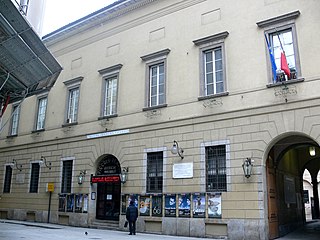
The Piccolo Teatro di Milano is a theatre in Milan, Italy. Founded in 1947, it is Italy's first permanent theatre, and a national "teatro stabile", or permanent repertory company, and is considered a theatre of major national and European importance. The theatre has three venues: Teatro Grassi, in Via Rovello, between Sforza Castle and the Piazza del Duomo; Teatro Studio, which was originally intended to be the theater's rehearsal hall; and Teatro Strehler, which opened in 1998 with a seating capacity of 974. Its annual programme consists of approximately thirty performances. In addition, the venue hosts cultural events, from festivals and films, to concerts, conferences, and conventions, as well as supporting the Paolo Grassi Drama School.
Sight 5: Chiesa di San Tomaso
San Tomaso in Terramara is a Neoclassical architecture, Roman Catholic church in Milan, Italy. Construction at the site began in the 11th century; the present structure with an imposing facade designed by Gerolamo Arganini was completed in 1827.
Sight 6: Santa Maria della Consolazione
The church of Santa Maria della Consolazione al Castello is a small church located in Largo Cairoli in Milan, at the end of Via San Giovanni sul Muro and in front of the Teatro dal Verme. It is a subsidiary church of the parish of Santa Maria alla Porta of the Archdiocese of Milan and chaplaincy of the community of the Milanese Filipino faithful.
Wikipedia: Chiesa di Santa Maria della Consolazione (Milano) (IT)
Sight 7: Teatro Dal Verme
The Teatro Dal Verme is a theatre in Milan, Italy located on the Via San Giovanni sul Muro, on the site of the former private theatre the Politeama Ciniselli. It was designed by Giuseppe Pestagalli to a commission from Count Francesco Dal Verme, and was used primarily for plays and opera performances throughout the 19th and early 20th centuries. Today, the theatre is no longer used for opera, but is a venue for concerts, plays and dance performances, as well as exhibitions and conferences.
Sight 8: Teatro Romano
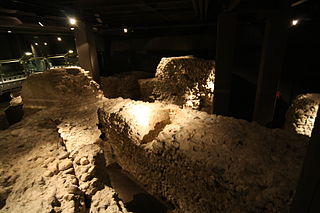
The Roman Theatre of Milan was an ancient theatre in the Roman city of Mediolanum, present-day Milan. Erected during the Augustan age between the end of the first century BC and the beginning of the first century, it was the first large building built by the ancient Romans in Mediolanum with a view to a broader construction of important masonry structures, which was followed by the construction of the Roman forum in Milan. The theater maintained its original function until the fourth or fifth century, when the edicts of Theodosius and the progressive conquest of power by the Church began to hinder theatrical performances and games in the amphitheaters.
Sight 9: Piazza degli Affari
Piazza degli Affari, commonly known as Piazza Affari, is one of the main squares in Milan, adjacent to Piazza Cordusio and not far from Piazza Duomo.
Sight 10: L.O.V.E.
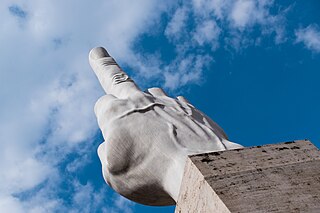
L.O.V.E., commonly known as Il Dito is a sculpture by Italian artist Maurizio Cattelan consisting of a hand with all the fingers severed with the exception of the middle finger. The sculpture is located in Piazza degli Affari in (Milan), where the Italian stock exchange is located. The name L.O.V.E. is the acronym of "Libertà, Odio, Vendetta, Eternità". The sculpture, built in 2010, was originally exhibited on the occasion of Cattelan's retrospective at The Royal Palace of Milan. After the exhibition closed, the city Councillor for Culture Massimiliano Finazzer Flory proposed the piece to be permanent. The business community objected to the idea but after long deliberations, facilitated by Cattelan's decision to donate the sculpture, L.O.V.E. was eventually given permanent status.
Sight 11: Chiesa di Santa Maria alla Porta
Santa Maria alla Porta is a church in Milan, Italy.
Sight 12: Torre dei Gorani
The Torre dei Gorani is a tower dating back to the eleventh century, testimony of the seat of the destroyed Palazzo Gorani, located in Milan, in via Gorani.
Sight 13: Villa Imperiale
The Roman Imperial Palace in Milan was an imperial residence built by Emperor Maximian when Mediolanum became the capital of the Western Roman Empire, a role it played from 286 AD to 402 AD. On this occasion, Maximian embellished the city with various monuments, and a considerable part of the city was reserved for the imperial palace and its quarter, which was the residence of the emperor and his court, and which included representative and administrative premises, as well as private baths, fixed military garrisons, private places of worship and residential areas.
Sight 14: Civico museo archeologico di Milano
The Archaeological Museum of Milan is located in the ex-convent of the Monastero Maggiore, alongside the ancient church of San Maurizio al Monastero Maggiore, with entrance on Corso Magenta.
Sight 15: San Maurizio al Monastero Maggiore
San Maurizio al Monastero Maggiore is a church in Milan, Northern Italy. It was originally attached to the most important female convent of the Benedictines in the city, Monastero Maggiore, which is now in use as the Civic Archaeological Museum. The church today is used every Sunday from October to June to celebrate in the Byzantine Rite, in Greek according to the Italo-Albanian tradition. It is also used as a concert hall.
Sight 16: Circo romano
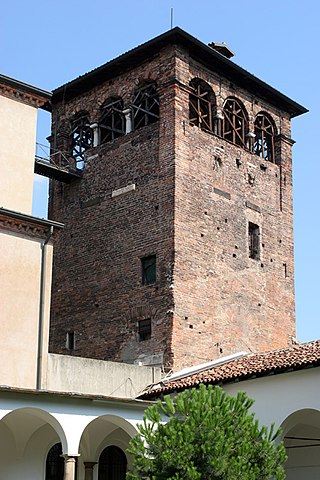
The Roman Circus of Milan was an ancient circus in the Roman city of Mediolanum, present-day Milan. The building, which measured 470 meters in length and 85 in width, was the largest Roman circus built during the era of Diocletian's Tetrarchy. Few Roman cities could boast of owning a circus, as it was a symbol of great economic power, given the cost of maintaining such a large structure and horses, and military. In Northern Italy, in addition to Milan, only Aquileia had a circus. The Roman circus of Milan was mainly used for sports competitions on horseback, led by both chariots and chariots, and exceptionally for gladiator fights.
Sight 17: Torre di Massimiano
The Roman walls of Milan were a wall with towers that had different phases of construction during the Roman era. A first phase took place in the Republican era and a second after 291, in the imperial era, at the time of Augustus Maximian, when Mediolanum became the capital of the Western Roman Empire.
Sight 18: Chiesa di San Nicolao
The Chiesa di San Nicolao is a church in Milan, Italy. It was originally built in 1259.
Sight 19: Pusterla di Sant'Ambrogio
The Pusterla di Sant’Ambrogio is a minor or secondary gate in the Medieval walls of Milan; the rebuilt Romanesque-style tower and pedestrian arches is located on Via Carducci #41, near the Castello Cova and some 50 meters west of the entrance of the Basilica di Sant'Ambrogio in the center of Milan, region of Lombardy, Italy.
Sight 20: North American FIAT F–86 K
The North American F-86 Sabre, sometimes called the Sabrejet, is a transonic jet fighter aircraft. Produced by North American Aviation, the Sabre is best known as the United States' first swept-wing fighter that could counter the swept-wing Soviet MiG-15 in high-speed dogfights in the skies of the Korean War (1950–1953), fighting some of the earliest jet-to-jet battles in history. Considered one of the best and most important fighter aircraft in that war, the F-86 is also rated highly in comparison with fighters of other eras. Although it was developed in the late 1940s and was outdated by the end of the 1950s, the Sabre proved versatile and adaptable and continued as a front-line fighter in numerous air forces.
Sight 21: F-84 F Thunderstreak
The Republic F-84F Thunderstreak is an American swept-wing turbojet-powered fighter-bomber. The RF-84F Thunderflash was a photo reconnaissance version.
Sight 22: Museo Nazionale della Scienza e della Tecnologia
Museo Nazionale Scienza e Tecnologia Leonardo da Vinci in Milan, dedicated to painter and scientist Leonardo da Vinci, is the largest science and technology museum in Italy. It was opened on 15 February 1953 and inaugurated by Prime Minister Alcide De Gasperi.
Wikipedia: Museo Nazionale Scienza e Tecnologia Leonardo da Vinci (EN), Website
Sight 23: Sottomarino Enrico Toti
Italian submarine Enrico Toti was the first of a new class of Italian submarine, with Enrico Toti being laid down in 1965, launched in 1967, decommissioned in 1992 and preserved as a museum ship at thea Museo della Scienza e della Tecnologia "Leonardo da Vinci", in Milan. The ship, and class, are named after the Italian war hero Enrico Toti.
Wikipedia: Italian submarine Enrico Toti (S 506) (EN), Website
Sight 24: Fiat G91R
The Fiat G.91 is a jet fighter aircraft designed and built by the Italian aircraft manufacturer Fiat Aviazione, which later merged into Aeritalia.
Sight 25: Basilica di San Vittore al Corpo
The church and monastery of San Vittore al Corpo were an ancient monastery of the Olivetan order built in the early 16th century. The site was once a fourth century Roman imperial mausoleum of Maximian, that may also have held the burials of the emperors Gratian and Valentinian II, though they were more likely buried in another mausoleum, now the Chapel of Saint Aquilinus in the Basilica of Saint Lawrence. The basilica was enlarged in the 8th century to house the relics of the saints Vittore and Satiro. A Benedictine monastery soon was attached to the church. In 1507, the monastery was transferred to the Olivetans, who began a major reconstruction. Reconstruction of the church was begun in 1533 by Vincenzo Seregni, and completed in 1568 by Pellegrino Tibaldi. The façade remains incomplete. The dome was frescoed in 1617 by Guglielmo Caccia. In the chapel of St Anthony is a 1619 canvas by Daniele Crespi. In the transept on the left, is an early 17th-century cycle of canvases of the Stories of San Benedetto, by Ambrogio Figino while the right transept has three altarpieces by Camillo Procaccini. Other chapels have paintings by Pompeo Batoni and Giovanni Battista Discepoli.
Sight 26: Mausoleo imperiale e Recinto di San Vittore al Corpo
The imperial mausoleum of San Vittore al Corpo was a circular funerary monument in the Roman city of Mediolanum. Built towards the end of the fourth century at the time when Mediolanum was the capital of the Western Roman Empire and located outside the Roman walls of Milan near the Roman Porta Vercellina, it probably housed the tombs of the family of Emperor Valentinian. According to medieval episcopal lists, the bodies of the first Milanese bishops, Myrocles (313-314) and Protasius (343-344), were also placed inside the imperial mausoleum. Transformed into the chapel of San Gregorio between the ninth and tenth centuries and annexed to the church of San Vittore al Corpo, the mausoleum was demolished in the sixteenth century on the occasion of the late sixteenth-century reconstruction of the aforementioned Christian church.
Sight 27: Vineyard of Leonardo
Leonardo da Vinci's Vineyard is a vineyard the Duke of Milan, Ludovico Maria Sforza best known as Ludovico il Moro, gave as a gift to Leonardo da Vinci in 1498 while he was working on the painting of Last Supper in the nearby refectory of the cathedral and Dominican convent of Santa Maria delle Grazie. It was a gesture to give credit for the many admirable works Leonardo had been creating for the Duke.
Wikipedia: Leonardo da Vinci's Vineyard (EN), Website, Instagram, Facebook
Sight 28: Santa Maria delle Grazie
Get Ticket*Santa Maria delle Grazie is a church and Dominican convent in Milan, northern Italy, and a UNESCO World Heritage Site. The convent contains the mural of The Last Supper by Leonardo da Vinci, which is in the refectory.
Sight 29: The Last Supper
Get Ticket*The Last Supper is a mural painting by the Italian High Renaissance artist Leonardo da Vinci, dated to c. 1495–1498, housed in the refectory of the Convent of Santa Maria delle Grazie in Milan, Italy. The painting represents the scene of the Last Supper of Jesus with the Twelve Apostles, as it is told in the Gospel of John – specifically the moment after Jesus announces that one of his apostles will betray him. Its handling of space, mastery of perspective, treatment of motion and complex display of human emotion has made it one of the Western world's most recognizable paintings and among Leonardo's most celebrated works. Some commentators consider it pivotal in inaugurating the transition into what is now termed the High Renaissance.
Sight 30: Museum of the Cenacolo of leonardo da vinci
The Last Supper is a mural painting by the Italian High Renaissance artist Leonardo da Vinci, dated to c. 1495–1498, housed in the refectory of the Convent of Santa Maria delle Grazie in Milan, Italy. The painting represents the scene of the Last Supper of Jesus with the Twelve Apostles, as it is told in the Gospel of John – specifically the moment after Jesus announces that one of his apostles will betray him. Its handling of space, mastery of perspective, treatment of motion and complex display of human emotion has made it one of the Western world's most recognizable paintings and among Leonardo's most celebrated works. Some commentators consider it pivotal in inaugurating the transition into what is now termed the High Renaissance.
Sight 31: Monumento a Francesco Baracca
The monument to Francesco Baracca is a sculpture made by Silvio Monfrini. The work is located in Piazzale Francesco Baracca in Milan.
Sight 32: Chiesa di San Francesco d'Assisi al Fopponino
The church of San Francesco d'Assisi al Fopponino is a modern parish church located in Milan in Via Paolo Giovio, near Piazzale Aquileia, in the territory of the Deanery of Porta Vercellina. Completed in 1964 on a design by the architect Gio Ponti, it stands on an area previously occupied by the Fopponino di Porta Vercellina, a cemetery opened in 1576 during the great plague of San Carlo and suppressed in 1895.
Wikipedia: Chiesa di San Francesco d'Assisi al Fopponino (IT)
Share
How likely are you to recommend us?
Disclaimer Please be aware of your surroundings and do not enter private property. We are not liable for any damages that occur during the tours.
GPX-Download For navigation apps and GPS devices you can download the tour as a GPX file.
